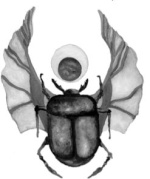Similar topics
"Medical Explanations of Bewitchment"
Page 1 of 1
 "Medical Explanations of Bewitchment"
"Medical Explanations of Bewitchment"
See here for the complete article:
Medical explanations of bewitchment, especially as exhibited during the Salem witch trials but in other witch hunts as well, have emerged because it is not widely believed today that symptoms of those claiming affliction were actually caused by bewitchment, and so, the reported symptoms have been explored by a variety of researchers for possible biological and psychological origins.
Modern academic historians of witch hunts generally do not give serious credence to medical explanations, citing the cherry-picking of biological symptoms by adherents of various medical theories to make the afflictions seem more consistent with the selected illness, and pointing out that the evidence cited as support for certain symptoms is often historically inaccurate. They believe that the accusers in Salem were motivated by social factors – jealousy, spite, or a need for attention – and that the extreme behaviors exhibited were "counterfeit," as contemporary critics of the trials had suspected.
A widely-known theory about the cause of the reported afflictions attributes the cause to the ingestion of bread that had been made from rye grain that had been infected by a fungus, Claviceps purpurea, commonly known as ergot. This fungus contains chemicals similar to those used in the synthetic psychedelic drug LSD. Convulsive ergotism causes a variety of symptoms, including nervous dysfunction.
The theory was first widely publicized in 1976, when graduate student Linnda R. Caporael published an article in Science magazine, making the claim that the hallucinations of the afflicted girls could possibly have been the result of ingesting rye bread that had been made with moldy grain. "Ergot of Rye" is a plant disease caused by the fungus Claviceps purpurea. which Caporael claims is consistent with many of the physical symptoms of those alleged to be afflicted by witchcraft.
Within seven months, however, a refutation of this theory was published in the same journal by Spanos and Gottlieb. They performed a wider assessment of the historical records, examining all the symptoms reported by those claiming affliction, among other things, that 1) ergot poisoning has additional symptoms that were not reported by those claiming afflicting, 2) if the poison was in the food supply, symptoms would have occurred on a house-by-house basis not in only certain individuals, and 3) biological symptoms do not start and stop based on external cues, as described by witnesses, nor do biological symptoms start and stop simultaneously across a group of people, also as described by witnesses.
Another problem with the Ergot theory is the fact that Salem Village, along with the rest of Massachusetts, was in a very prolonged period of drought at the start of the witch trials which would have created environmental conditions that were not conducive to mold growth. See Drymon, Disguised as the Devil, 2008, Appendix D for a Palmer Drought Index graph of the time period.
In 1989, Mary Matossian reopened the issue, supporting Caporeal, including putting an image of ergot-infected rye on the cover of her book, Poisons of the Past. Matossian refuted Spanos and Gottlieb, based on evidence from Boyer and Nissenbaum in Salem Possessed that indicated a geographical constraint to the reports of affliction within Salem Village.

Khephra- Age : 59
Number of posts : 897
Registration date : 2008-08-10
 Similar topics
Similar topics» "Top Scientists Ask Medical Journal Science To Retract Original AIDS Papers" -
» "Torah" & "Nomos"
» "Man arrested for frenzied attack on priest after watching The Da Vinci Code"
» "Torah" & "Nomos"
» "Man arrested for frenzied attack on priest after watching The Da Vinci Code"
Page 1 of 1
Permissions in this forum:
You cannot reply to topics in this forum
